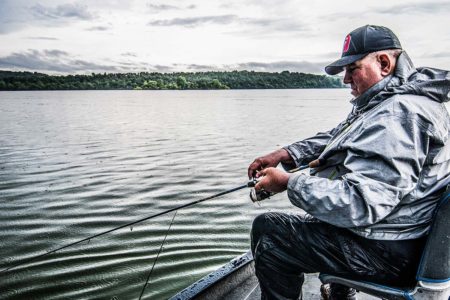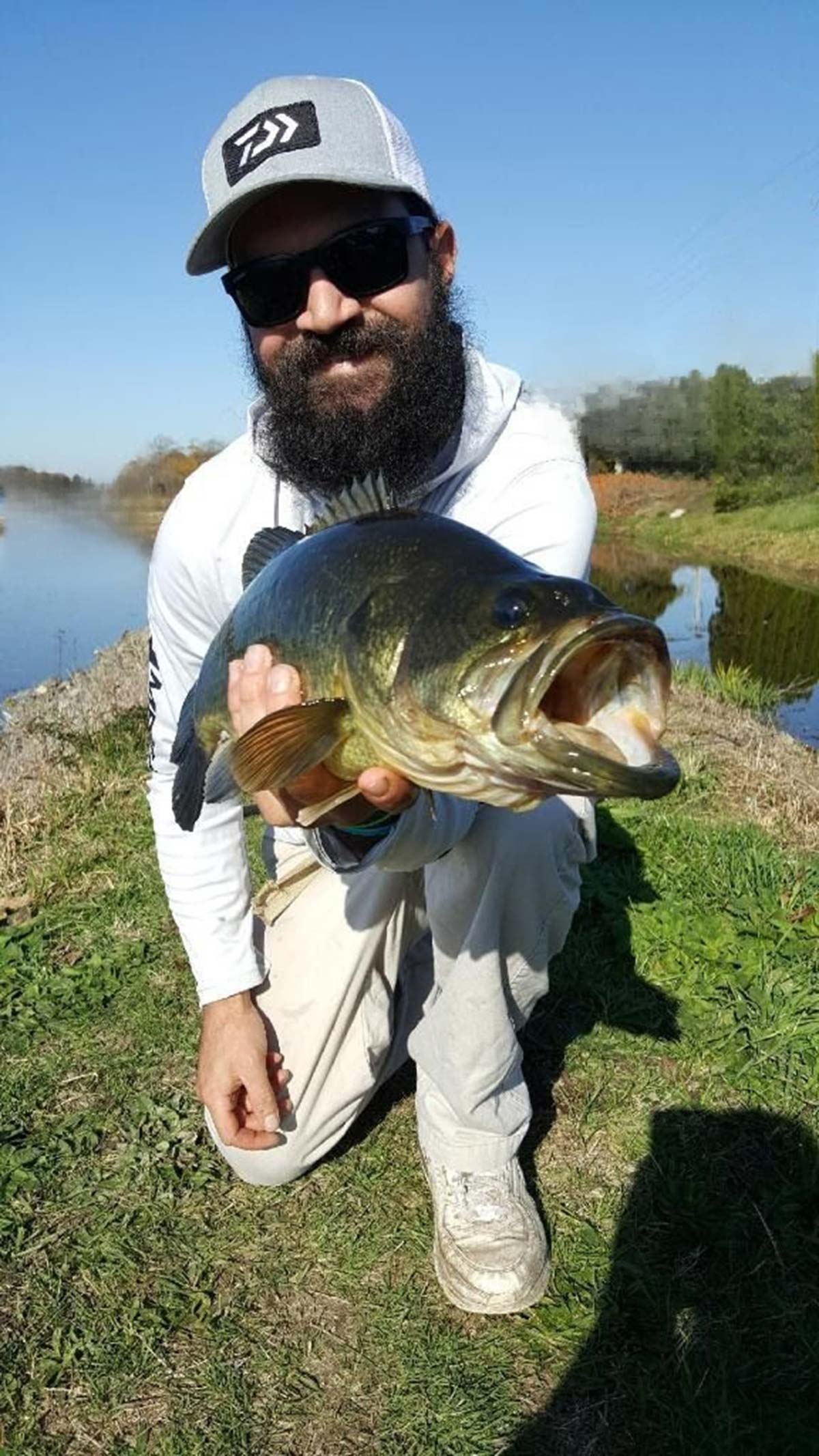
November is one of the best months of the year for giant largemouth bass!
Have you ever heard the term, “November to remember?” Well, if you enjoy largemouth bass fishing, something to remember about November is that the bass bite goes crazy. I can’t help but get hyped up, just thinking about it; November is one of my favorite months of the entire season when it comes to big fish. In many ways you could say it’s the ‘last call’ for hot bites, but I’d be lying if I said I haven’t experienced some awesome December fishing—maybe that’s an article for next year!
When the calendar page flips to November, there’s no time to mess around. If you don’t do cold weather, you’re going to have to suck it up, buttercup. Either that or maybe pick up a new hobby; table tennis anyone? But if you’re on the fence, maybe the fact that some of the best topwater action of the year happens in November (and most people don’t even realize it) will get you out of your jammies and into your waders or bibs.
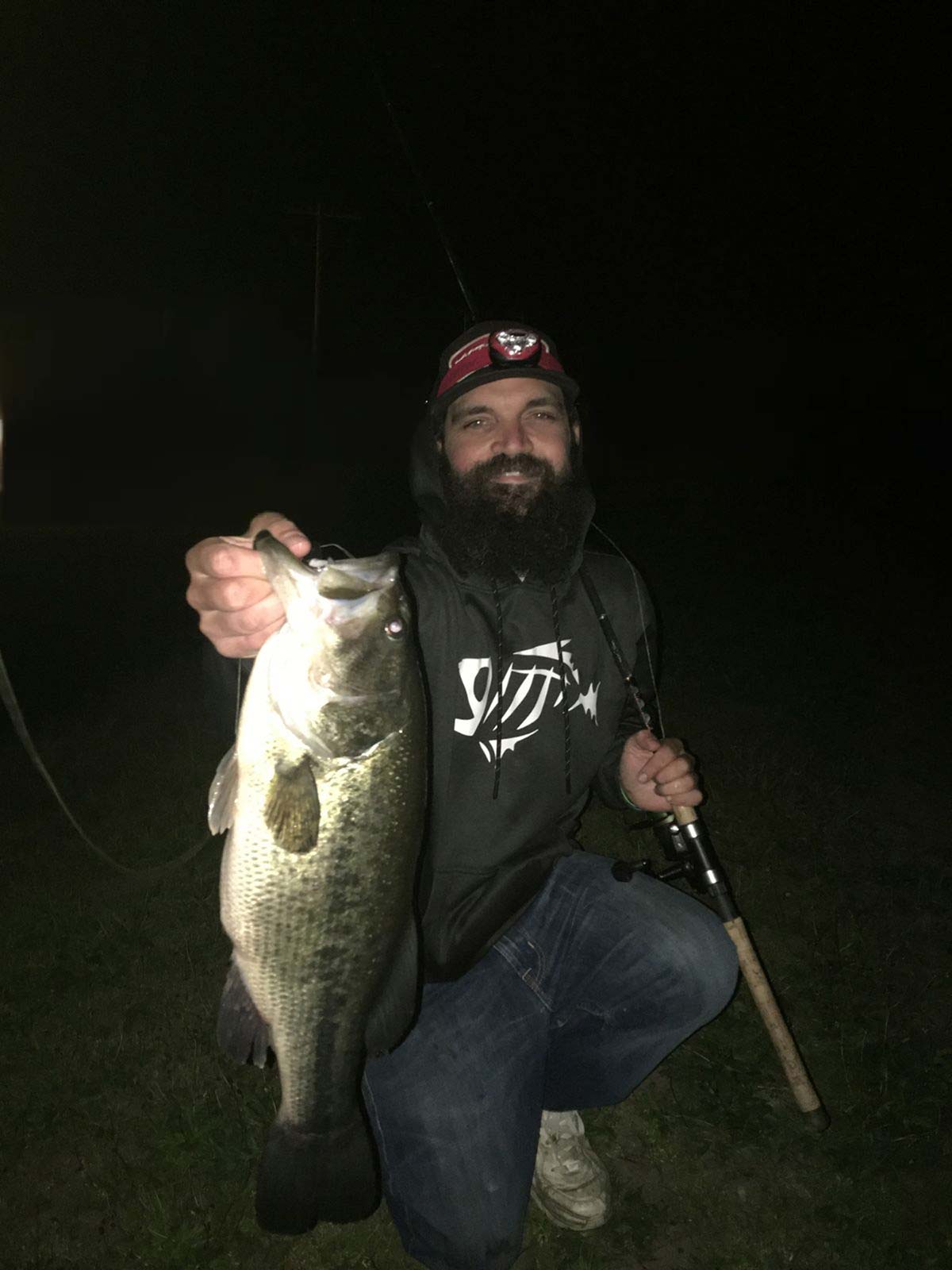
Warm Spots Are Hot Spots
The things I look for to produce a good, late-season, largemouth bite are not always easy to find one thing that really increases your odds of hooking up is healthy, green grass or other vegetation. This usually means the water is warmer in that area for some reason and also that the water there is usually well oxygenated. And warmer water is always going to be a factor when looking for more aggressive fish. So looking in shallower places that get a lot of sun like coves in the north ends of ponds, or shallow flats with good cover like big rocks or logs, and muddy bottoms also hold heat. Stone walls, rip-rap and manmade structures like bridge abutments, dams, pilings and piers also soak up the warmth of the sun and transfer it into the nearby water, so these areas are also good places to look at this time.
The other thing to look for is bait; these fish are bulking up for a long, lean winter and a reliable source of bait is going to keep them close by. Even finding some dead bluegills or perch or other bait species on the shoreline can be an indication that baitfish frequent the area. Seeing baitfish can be a key to unlocking the bite too, because sometimes largemouths can get really finicky and locked in on half-dollar-sized bluegills, or 8-inch perch or something like young-of-the-year river herring. If you can observe the predominant bait size and profile, it will take a lot of guesswork out of the situation.
Live Outside The Box
I’m always trying to think outside the box when it comes to fishing. When most anglers feel that cold wind on their face, they automatically go to the accepted cold water tactics. While those techniques definitely will catch fish, you might be surprised to know that I really don’t change my tactics all that much from what I do during the summer.
Let’s just get this out there right away, I’m throwing topwater until the lake skims over with ice. I’m hopelessly addicted to topwater explosions; I swear, I hear them in my sleep! I think one of the things that really plays into my hands is that I fish a lot of ponds and lakes all season long and, come November, I concentrate on the ones where the fish show a clear tendency to be more aggressive and fatter on average. Some ponds just don’t have a great cold water bite, but those lakes with well-fed fish seem to feature more aggressive bites later into the year.
The best spots to find the biggest fish are places where prominent structure (or areas known to hold bait) are immediately adjacent to a steep transition to deeper water. And when you find a good bite on one of these ledge areas, prepare for the big one!
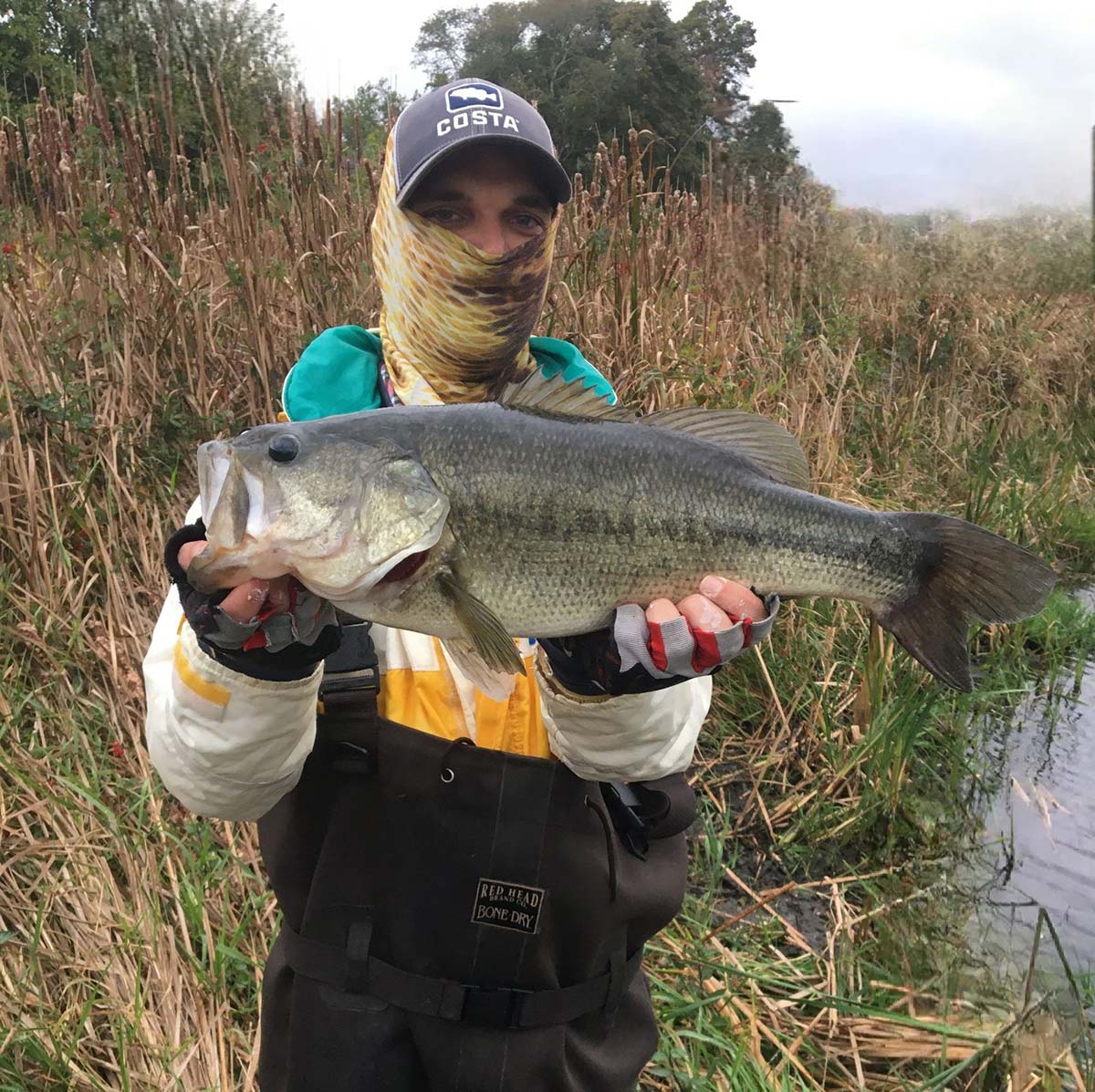
Warmth Breeds Aggression
I know it might feel counterintuitive to stick with summer tactics during the transition from fall to winter, but here’s my logic and it really seems to hold true. In the summertime, when the whole pond is warm, the fish tend to become sluggish in the daytime and we have our best results in the morning, evening and after dark. During the colder parts of the season, when the bass move up into the warmer shallows, they get extra fired up and the bites can fierce. These fish come up into these areas for one reason and that is to feed, feeding chances are fewer and further between during this time of transition and the fish usually aren’t shy about smashing a fast-moving lure.
Back in 2018, it was November 16 and the weather was ugly. North/northwest winds blowing 25 to 30 mph and a heavy mist falling; certainly not comfortable. During the summer, when the water levels were low, I had found this ledge with a big boulder sitting right on the drop-off. I set myself within casting range of the big rock and started using a chatterbait to clunk along the rocky ledge, hoping to draw some attention. I just knew there would be a big fish there with front moving through. After experimenting with retrieve angles I finally got hit, and a couple minutes later I had a 6.5-pounder on the shore. It didn’t take more than a few more minutes to catch one almost as large at 6 pounds, even. Any time we get one of those November nor’easters, even if they are forecast to drop some early snow, don’t miss the opportunity to fish, those are the times when the bite can be epic.
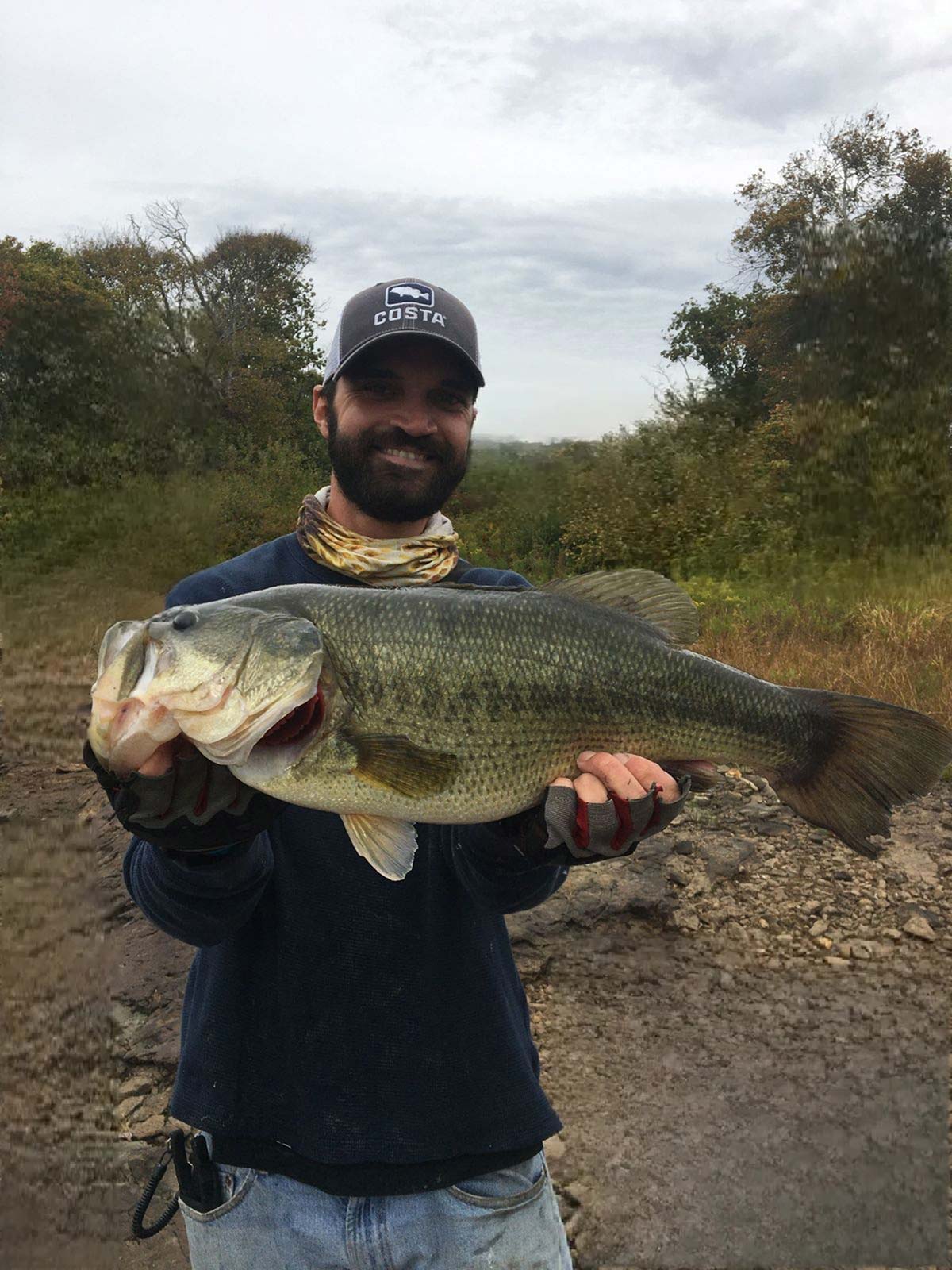
Tackling November
I’ll start with my rod and reel; this setup is a beast and I can do anything from finesse to power fishing with it. The rod I use is a Daiwa Procyon 6-foot, 6-inch medium heavy spinning rod; it features a solid parabolic bend from tip to grip, but with tons of backbone for driving the hook home and controlling big fish. The reel is my all-time favorite spinning reel, the Shimano Vanford 3000. I can’t say enough about this thing, it’s the lightest reel on the market for its size class at 6 ounces, and it has a ton of power in spite of its finesse look and feel. This setup is easy to fish for long hours, I make thousands of casts in a day and it takes zero effort with this rig. I spool this outfit with 30-pound PowerPro in moss green. I like the 30 because it’s not too thick, and yet has the power and durability to cut through lily pads, stand up to grass and withstand some abuse from rocks.
For lures, I keep it pretty simple, which is one change over the summertime when I’m likely to pack everything but the kitchen sink. I like to have options that cover the water column so I bring at least two topwater, two mid-column and two deep/bottom baits. My first choice in the topwater category is the Berkley Choppo 120 in black. This bait draws huge topwater explosions, even in November. This thing hunts fish down and causes mayhem. My second topwater choice is the War Eagle Buzzbait, this thing is loud enough to tick off the crickets! When fished around grass or shallow boulders this bait will draw vicious strikes.
The next bait is sort of a hybrid topwater/shallow runner and it’s kind of a secret weapon that I usually don’t like to talk about! I’m talking about the Berkley Wakebull. I don’t know why so many bass hate this thing with such passion, but they do and they keep coming back for more. This bait will wake or swim just below the surface and features a loud, low-frequency knock that drives bass insane. This thing crushes in shallow structure, but I’ve seen them come up 10 feet for it. You can thank me later.
My two mid-column crushers are next and the first one – surprise-surprise – is the ZMan Original Chatterbait in black/blue. You knew I was going to go there, right? If you ask me there is no wrong way to fish a chatterbait. I like to tick them along the bottom, but my favorite thing about them is their versatility, because they can be fished at many speeds and depths—they crush fish. I like to have the Berkley Frittside Squarebill Crankbait (silent) for those times when the fish are acting finicky and I want a slower, quieter presentation. With no rattles this bait can convince wary fish to strike when nothing else will.
When I need to go hyper-finesse or just want to fish on the bottom, I seem to always find myself reaching for the Ned Rig. I like the ZMan TRD in ‘drews craw’ on a 3/8-ounce Ned Head. These things are like the Ron-Z of freshwater fishing, there’s no wring way to fish them and they catch everything! They can be dead-sticked, hopped, dragged or swum and they will keep catching fish. The Ned is your friend in November.
I hope these tips will inspire you to get out there and give largemouth bass fishing a try this November. Remember to look for live vegetation and to keep your eyes peeled for baitfish—live or dead. November produces big fish, but not that many guys actually get out there and try. So don’t wait for spring and don’t start your holiday shopping early, get out there and catch some bass. As far as I’m concerned, Black Friday is for bass fishing.



